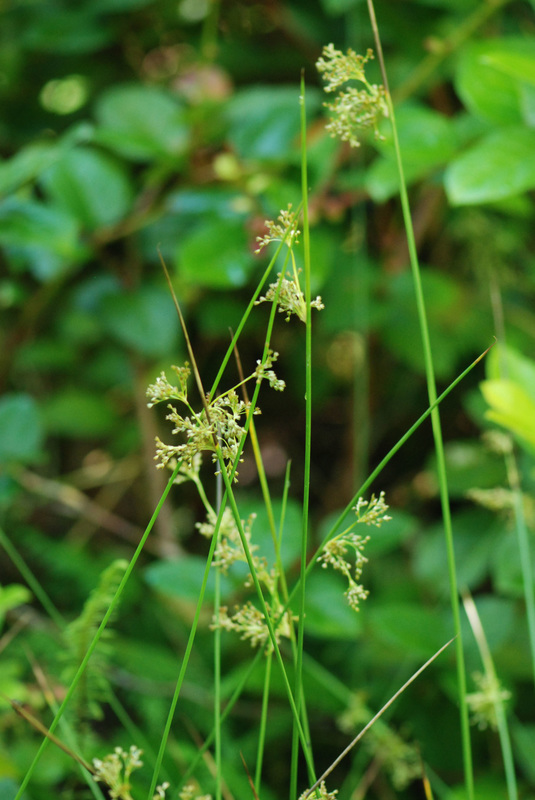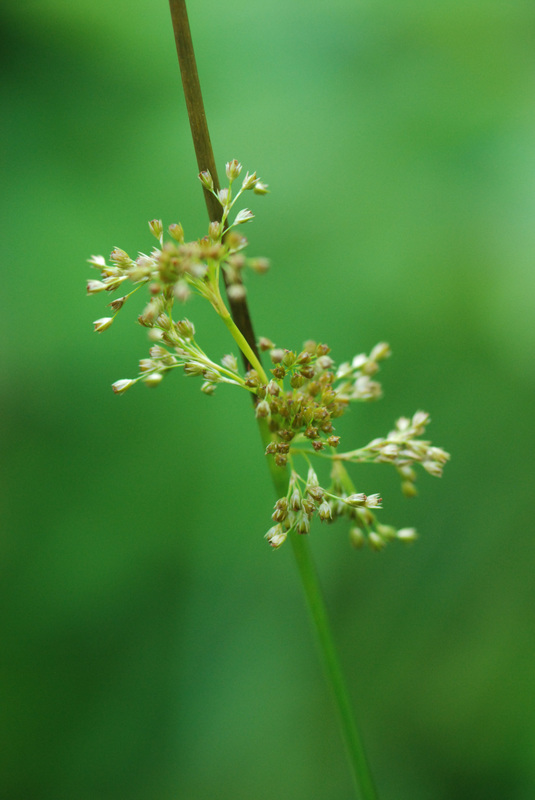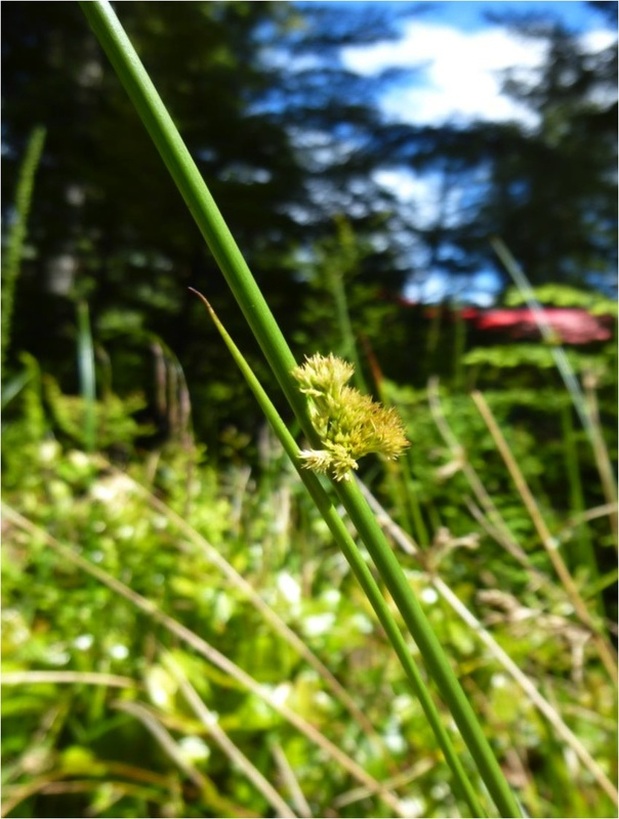Common rush, soft rush • Juncus effusus
Common rush growing alongside a wet forest trail. Photos by Kelly Fretwell.
Identification
Common rush is a perennial species that grows in dense tufted clusters. Its stems are round or lined with fine longitudinal grooves, 1.5-3 mm thick, and grow to 130 cm tall. The stems are essentially leafless - the leaves are reduced to small sheaths near the base of the stem. The inflorescence clusters appear to attach along the side of the stem. The lowermost cluster is surrounded by a large (5-25 cm long) involucral bract which appears like a continuation of the stem (see above photo). The inflorescence may be compact or open and have greenish or brownish flower scales.
There are three varieties of common rush in BC. Click here for information on varieties, a more detailed description of the inflorescence, and some useful illustrations.
Common rush is a perennial species that grows in dense tufted clusters. Its stems are round or lined with fine longitudinal grooves, 1.5-3 mm thick, and grow to 130 cm tall. The stems are essentially leafless - the leaves are reduced to small sheaths near the base of the stem. The inflorescence clusters appear to attach along the side of the stem. The lowermost cluster is surrounded by a large (5-25 cm long) involucral bract which appears like a continuation of the stem (see above photo). The inflorescence may be compact or open and have greenish or brownish flower scales.
There are three varieties of common rush in BC. Click here for information on varieties, a more detailed description of the inflorescence, and some useful illustrations.
|
Habitat & Range
Common rush is true to its name - it is a common species, and grows in a wide variety of shade-free edge or disturbed habitats. Some examples include the edges of ponds, bogs, and forests, in tidal flats, ditches, pastures, and clearings, along roads, and in moist or wet fields. It is found from low to middle elevations. In BC it grows west of the Coast-Cascade Mountains. Its range stretches north to Alaska, south to California, and east across most of North America except for some areas of central and northern Canada. It is also found in Eurasia. Similar Species Thread rush (J. filiformis) is a similar species with stem-like involucral bracts. Its bracts are longer - at least half the length of the stem - and its stems are thinner (1 mm thick). Human Uses Click here for cultivation information. |
References
Juncus effusus L. In Klinkenberg, Brian. (Ed.). E-Flora BC: Electronic Atlas of the Plants of British Columbia. Lab for Advanced Spatial Analysis, Department of Geography, University of British Columbia, Vancouver. Accessed 11/09/2013.
Pojar, J. and MacKinnon, A. (1994). Plants of Coastal British Columbia. Vancouver, BC: Lone Pine Publishing. P. 410.
Authors and editors of page
Kelly Fretwell and Brian Starzomski (2013).
Juncus effusus L. In Klinkenberg, Brian. (Ed.). E-Flora BC: Electronic Atlas of the Plants of British Columbia. Lab for Advanced Spatial Analysis, Department of Geography, University of British Columbia, Vancouver. Accessed 11/09/2013.
Pojar, J. and MacKinnon, A. (1994). Plants of Coastal British Columbia. Vancouver, BC: Lone Pine Publishing. P. 410.
Authors and editors of page
Kelly Fretwell and Brian Starzomski (2013).







